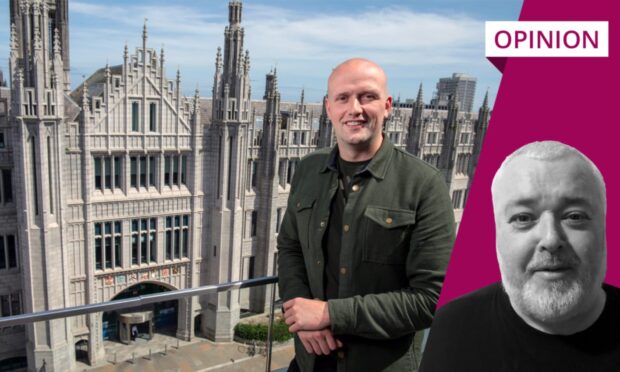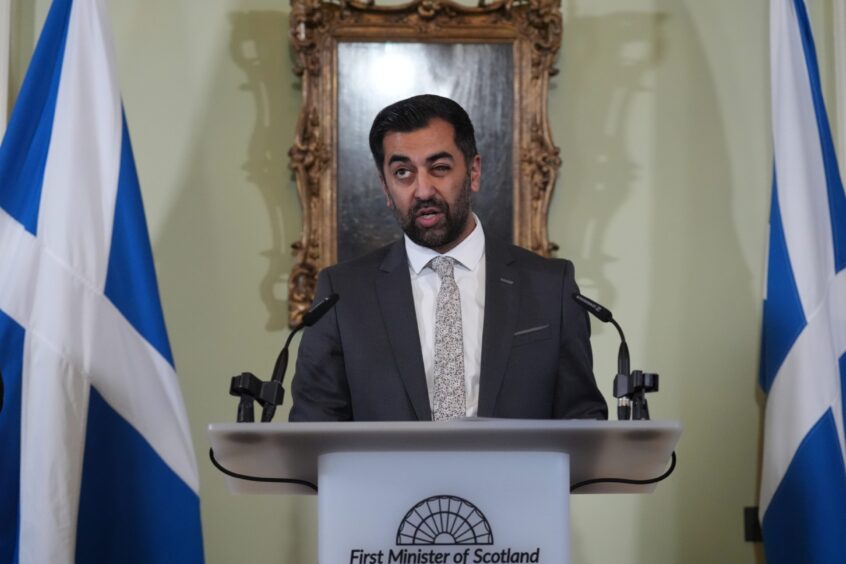It was the least surprising announcement in Scottish politics since Nicola Sturgeon told us she was going to step down from parliament next year.
The fact is that it’s been clear for months that he sees his political future in Edinburgh.
Soon after the SNP’s drubbing in last July’s general election, which saw Flynn become leader of a group of just nine MPs, it emerged that he’d set his sights on replacing Audrey Nicoll as his party’s MSP for Aberdeen South and North Kincardine.
This led to some pretty brutal briefings against Flynn.
But it would appear the MP has prevailed. Flynn is all but certain to win the nomination for Nicoll’s seat and should be the favourite to win it.
This outcome would, I think, be in the best interests of the SNP.
Flynn, in common with most politicians who show a modicum of talent, can be a divisive figure among colleagues. Strong “who does he think he is?” vibes emanate from his opponents within the SNP.
Stephen Flynn is one of only a handful of serious contenders
But the fact is that Flynn is one of only a handful of serious contenders for the future leadership of a party that, right now, has lost its way.
Almost two decades after the Scottish nationalists won their first Holyrood election, they look tired and out of ideas. They look this way because they are this way.
Under Alex Salmond, the SNP built support to the point that the UK Government had no choice but to agree to holding an independence referendum in 2014.
Post-referendum defeat, Nicola Sturgeon enjoyed almost nine years of leadership during which she notched up election win after election win.
But since Sturgeon’s resignation in 2023, the SNP has existed in varying degrees of chaos.
Humza Yousaf’s leadership ended abruptly after a year, and, since then, John Swinney has been engaged in trying to stabilise the ship.
Swinney insists he is in the business of being First Minister for the long run, a claim to which I can only respond, “well, he would say that, wouldn’t he?”.
Sure, the current FM will – unforeseen disasters notwithstanding – lead his party through next year’s campaign, but I would be astonished if he were then willing to go on to serve for another five years at the top.
Swinney felt his time was up when Sturgeon stepped down, and, were it not for the Yousaf disaster, he would already be planning his retirement.
A consequence of the SNP’s tendency under recent leaders to hoard power at the top is that very few younger nationalist politicians have been allowed to develop their skills.
Under Sturgeon, cabinet secretaries were micromanaged to such a degree that they had almost no freedom to make decisions.
Nationalists took for granted the support of those who previously backed them
This shut-up-and-do-as-you’re-told approach might have ensured solid discipline in SNP ranks but it did nothing to bring on new talent. Flynn, in common with deputy First Minister Kate Forbes, has succeeded despite rather than because of their party’s culture.
A future SNP leadership team of Forbes and Flynn would look like a serious proposition to opponents, currently reassuring themselves that the nationalists are in steady decline.
The SNP’s move into Scottish Labour’s traditional heartlands across the central belt played a crucial part in the party’s electoral success but in focusing on voters in these areas the party took its eyes off the priorities of those in rural Scotland.
The nationalists started to take for granted the support of those who’d backed them in the past. The loss of 39 Westminster seats last year confirmed the foolishness of that approach.
Stephen Flynn is not the perfect politician. He handled the move to oust Audrey Nicoll badly and his criticism of Prime Minister Keir Starmer’s dealings with US President Donald Trump were too close, in tone, to the student union for comfort.
But, these minor mess-ups aside, there is no question that he has the basics required to make a go of a leading role. He’s quick-witted, willing to change course when circumstances demand, and sharp-elbowed enough to survive in what can be a gruelling contact sport.
As I write this, Stephen Flynn is just 36-years-old. I would not bet against him being First Minister before his 40th birthday.
Euan McColm is a regular columnist for various Scottish newspapers


Conversation